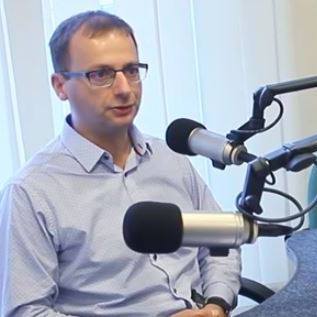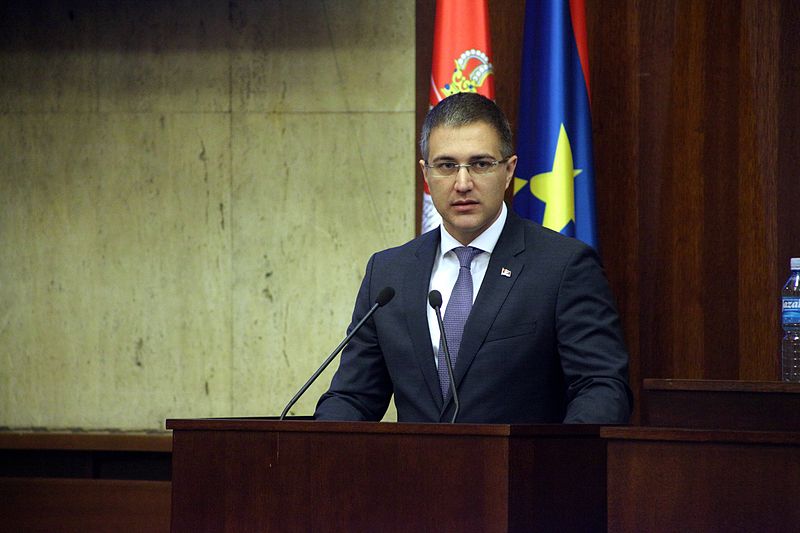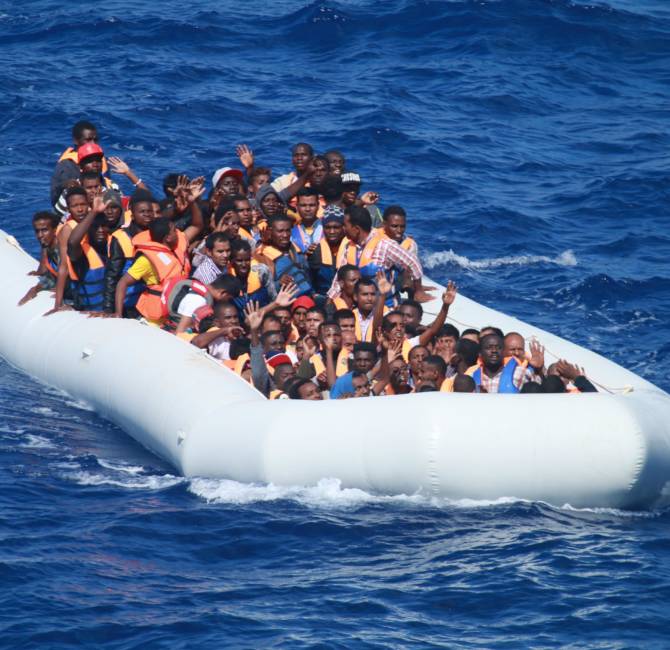To what extent is the drastic increase in energy prices directly due to Russia’s war, to what extent is it the result of European sanctions, and to what extent is it due to Russia’s actions aimed at weakening public support for Ukraine in European countries? In Poland, an association of major electricity companies, the Polish Electricity Association (PKEE), has embarked on a media campaign to counter what these companies describe as “a Kremlin disinformation campaign to turn Western societies against Ukraine” based on the claim that “Western support for Ukraine is at the root of rising energy prices”.
In the whole debate about energy prices, people tend to forget that gas prices began to rise in September–October 2021, several months before the start of the Russian offensive
against its Slavic neighbour. There were several causes behind the surge in gas prices in Europe at the time. In most European countries, including Germany, but with notable exceptions such as France and Poland, stocks were at their lowest as winter approached, following a particularly cold and long winter in 2019–20. Problems with the maintenance of infrastructure in several producing countries, including Norway, which at the time supplied 20% of the gas consumed in Europe, were also mentioned, while consumption was on the rise as a result of dynamic post-lockdown economic growth. Weak winds had also led to reduced electricity production by German wind turbines during the summer, increasing the use of gas to produce electricity, especially since European power consumption was then particularly high because of the scorching weather conditions in the western part of the continent. Russia, which before the war in Ukraine supplied 40% of Europe’s gas, did not take advantage of the situation to sell more gas, as any normal supplier would have done (if it had the necessary capacity, as Russia did). On the contrary,
in September 2021 Gazprom reserved for October only 30% of the capacity of the Yamal gas pipeline running through Poland, a decision that further fuelled the rise in gas prices. At the time, the aim was said to be to put pressure on the German authorities to begin operation of the new Nord Stream II gas pipeline.
The doubling of the Nord Stream pipeline was technically ready, but was hampered by the need to comply with EU law, which prohibited Gazprom from being both the producer of the gas and the owner of the pipeline. The International Energy Agency even expressed concern about the situation in late September 2021 and called on Russia to increase deliveries through the Yamal and Nord Stream I pipelines, which offered sufficient capacity to satisfy the European market, but Gazprom, in which the Russian state is a majority shareholder, refused. Thus, in the fourth quarter of 2021, when gas was in short supply in Europe and prices were soaring, the Russians, who alone had the capacity to rapidly increase deliveries to Europe, were only supplying about a third of the usual quantities.
The second gas shock, even harsher than the first, occurred after the start of the war in Ukraine and after the first EU sanctions kicked in, with Russia’s decision to suspend its deliveries to certain countries.
Initially, it was the countries that refused to switch to a rouble payment system that were sanctioned by Russia and saw themselves deprived of Russian gas overnight: first Poland and Bulgaria in April 2022, then, in May, Finland when it asked to join NATO, and also the Netherlands and Denmark (from June), which also refused to pay in roubles. In mid-June, Gazprom also reduced its deliveries to Germany through the Nord Stream I pipeline by 40%, before ceasing deliveries completely at the beginning of September 2022. On 27 September, two explosions off the Danish island of Bornholm seriously damaged the Nord Stream I and II gas pipelines, making it impossible to (re)commission them at this stage. Also starting last June, deliveries to Italy, traditionally Gazprom’s second largest customer in Europe after Germany, have been gradually reduced at the initiative of the Russians, even though the Italians, just like the Germans, had agreed to comply with the system imposed by the Kremlin for payment for Russian gas in roubles.
While Russia and the West are blaming each other for the attack on the Nord Stream pipelines, it is indeed Russia that has deliberately caused gas prices on the European market to soar by reducing deliveries in stages, starting in the early autumn of 2021. EU sanctions have never covered gas, contrary to what we sometimes hear.
The problem with gas prices is further amplified for people living in the EU because of the rules of the European electricity market, which cause the price of electricity to vary according to the price of gas. Gas-fired power plants can be easily shut down and restarted, and they are the adjustment variable of European power production. It is their production cost that dictates the price of electricity when they are called upon. With the shutdown of a large part of the French nuclear fleet due to ageing and maintenance (France, which normally exports electricity to its neighbours, has been forced to import it this year), gas-fired power plants have been in permanent use. Thus, by driving up gas prices through a purposeful reduction in supply that began in the autumn of 2021 and accelerated in response to Western support for Ukraine, Russia was also able to drive up electricity prices on the European market, accentuating the impact on consumers and companies on the continent and also the inflationary effect of its action on EU countries.
With regard to electricity, the Russian campaign of missile strikes against Ukraine’s energy infrastructure starting in November has not only been depriving civilians of electricity, water and heating as winter approaches, thus knowingly causing a humanitarian catastrophe, but it has also forced Ukraine to stop exporting electricity to Poland and the EU, further aggravating the current energy crisis in Europe.
According to Ukrenergo, the public operator of Ukraine’s distribution network, the damage is “colossal”, and the Russians are primarily targeting substations, which will be difficult and expensive to replace. Gas distribution infrastructure has also been targeted, making future deliveries of Russian gas through Ukraine uncertain, and this after the cessation of deliveries through Poland and the sabotage of the two Nord Stream gas pipelines. The explosions, which the West blames on the Russians (and which the Russians blamed first on the Americans and then on the British), may have been a signal sent to the world that the gas pipelines in the region are no longer a safe source of supply. The Nord Stream sabotage occurred on the same day as the inauguration of the new Baltic Pipe pipeline carrying Norwegian gas from Denmark to Poland, and thus making it possible to supply the eastern flank of NATO with Norwegian gas thanks to the existing interconnectors.
Such weaponising of gas by Russia, whether for economic purposes (to force an exemption from EU rules regarding the Nord Stream II pipeline, for Gazprom to consolidate its dominant position in supplying gas to Germany and to countries receiving Russian gas from Germany, in particular Austria) or for political purposes (to turn European societies against their governments’ policies of support for Ukraine and sanctions against Russia), is nothing new. Poland, which for a long time had to pay the price of the Russian gas company’s ultra-dominant position in its market, is well familiar with this, and that is why it warned against the Nord Stream II pipeline. While the existing pipelines (Nord Stream I between Russia and Germany, Yamal through Belarus and Poland, and its Transgas leg going through Belarus and Ukraine and entering the EU in Slovakia, towards Czechia and Austria) had ample capacity, the purpose of Nord Stream II could only be, in the eyes of the Poles and Balts, to give Moscow the means to cut off or reduce deliveries to countries of its choice, which could henceforth be bypassed while Russia continued to serve its other customers. A similar role is played further south by the gas pipelines that now link the Turkstream pipeline, which carries Russian gas to Turkey via the Black Sea, to Bulgaria, Serbia and Hungary, thus bypassing Ukraine to deliver gas to these Gazprom customers. Put into service in October 2021, this link was created at just the right time to enable Russia to attack Ukraine militarily without depriving itself of the capacity to use the gas weapon against individual countries.
If Poland was, long before Russia’s invasion of Ukraine, at the forefront of the group of countries denouncing Russia’s instrumentalisation of gas and warning of the danger of Germany becoming a distribution centre for Russian gas in Europe through the Nord Stream pipelines, thereby increasing its income and the competitiveness of its industry at the cost of increased dependence on Moscow, it was also because it had itself experienced how Gazprom could abuse its dominant position. It was only in 2018 that the European Commission finally succeeded in forcing Gazprom to remove clauses from its long-term contracts imposed on Central and Eastern European countries that prohibited them from reselling the gas they purchased and imposed much higher prices on them than on Western European countries. In this regard, an economics thesis presented in 1997 by Vladimir Putin himself at the State Mining Institute in St. Petersburg stated that, as far as Russia’s natural resources were concerned, they must remain under state control for the purpose of, among other things, “making various internal and external political decisions directed at the realisation of geopolitical interests and in compliance with Russia’s national security”. Let us also remember that this is not the first time that Europe has been suddenly deprived of Russian gas. It has happened several times before, when Gazprom wanted to obtain economic or political concessions (or both) from a recalcitrant customer, for example in January 2009 when the cutting off of supplies through Ukraine brutally deprived at least eleven European countries of Russian gas in the middle of a cold snap.




